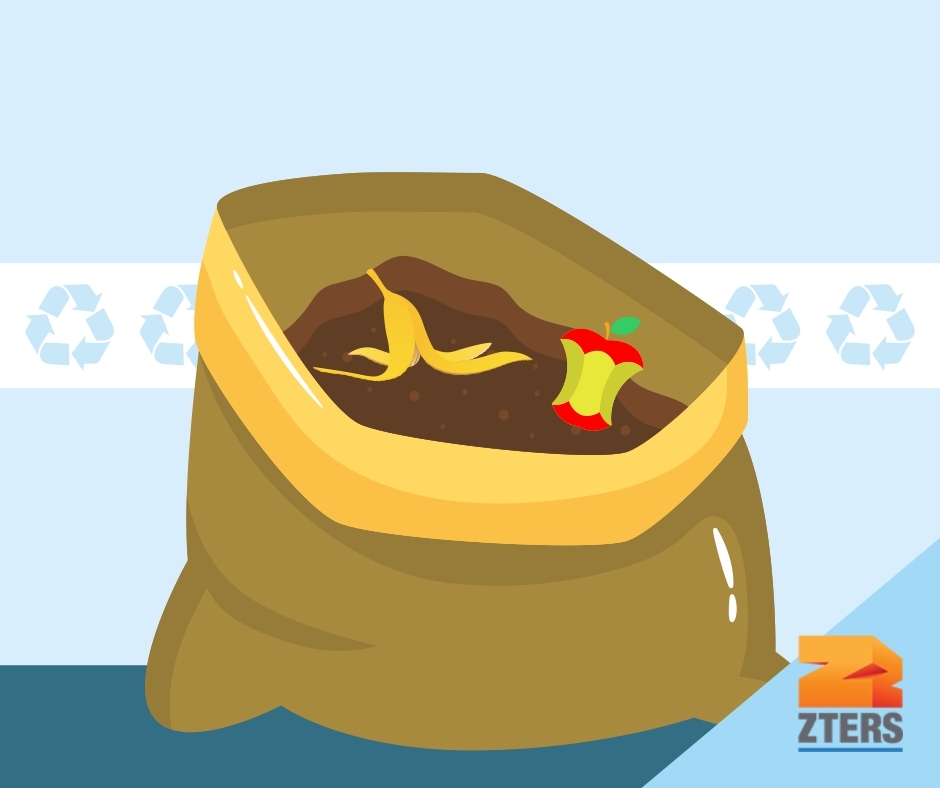Adopting eco-friendly practices at home is a crucial part of sustainable living. One such practice that we can easily incorporate into our daily routines is composting. Composting not only reduces waste but also produces nutrient-rich soil that can be used to nourish plants and gardens.
In this overview, we’ll explore the basics of how to compost at home. While there are ways to compost that involve large compost tumblers or even worms, we’ll focus specifically on ways to compost inside your home.
The Importance of Composting at Home
In the U.S., food is the most common material sent to landfills. To give you a sense of scale, 66.2 million tons of wasted food were generated in the food retail, food service and residential sectors in 2019. Only 5% of that wasted food was composted. (Source: EPA)
Suffice to say, we can do better!
Composting is a natural process that transforms organic waste into a valuable resource. It’s a form of recycling during which microorganisms break down organic matter into a soil-like material called compost. By composting at home, you divert kitchen scraps and yard waste from landfills, where they would otherwise contribute to the production of harmful greenhouse gasses.
Additionally, home composting can provide you with a sustainable alternative to chemical fertilizers, allowing you to create nutrient-rich soil for your plants.
How to Start Composting In Your Home
Something worth noting is that many cities are beginning to adopt municipal composting. Seattle, for instance, was a leader in this move towards greener disposal. Keep an eye out for green bins in residential neighborhoods and around town. You can also call your local municipality to ask about composting initiatives.
Here are some quick and easy steps to start composting at home.
Select a Compost Bin
Choose a compost bin that suits your space and lifestyle. As mentioned, options range from traditional outdoor bins and tumblers to indoor composters. Naturally, compost bins can carry an odor since they’re full of decaying food. (They can also attract fruit flies if not covered!) There are bins specifically designed to combat any funky smells. Likewise, you can store a small bin in your freezer to eliminate the smell altogether.
Buying biodegradable bags to line your compost bin can also make transporting the bag easier. This is especially helpful if you plan on placing your compost in a municipal bin or a drop-off point.
Make a Compost Mix
When it comes to creating an effective compost, think “greens and browns”. That is, you should be trying to layer green materials (such as fruits, veggies, coffee grounds) and brown materials (such as egg cartons, newspapers, dried leaves). Doing this allows water and air to flow, creating an environment where microorganisms can break down the materials.
Be Patient!
Depending on how exactly you’re doing it, composting takes time, typically several weeks to a few months. Keep an eye on the moisture level and temperature of the compost. If you notice that the compost is too wet, too dry, or too smelly, there are ways to remedy all of those issues. Composting at home may take some getting used to, but you should be proud of yourself for taking this important step towards greater sustainability!
What can and can’t go in the compost bin?
These items are good to be thrown in the compost bin:
- Fruits and vegetables
- Coffee grounds
- Egg shells
- Rice and other grains
- Flowers
- Tea bags
- Cooked food without oil, dairy, or meat
- Dried leaves
These items should not be thrown in the compost bin:
- Meat and fish
- Bones
- Dairy
- Oils and butter
- Cooked food with oil, dairy, or meat
Composting at home is a simple yet impactful way to contribute to a healthier planet. Join the composting revolution, reduce your carbon footprint, and cultivate a greener, more vibrant future for our planet.

